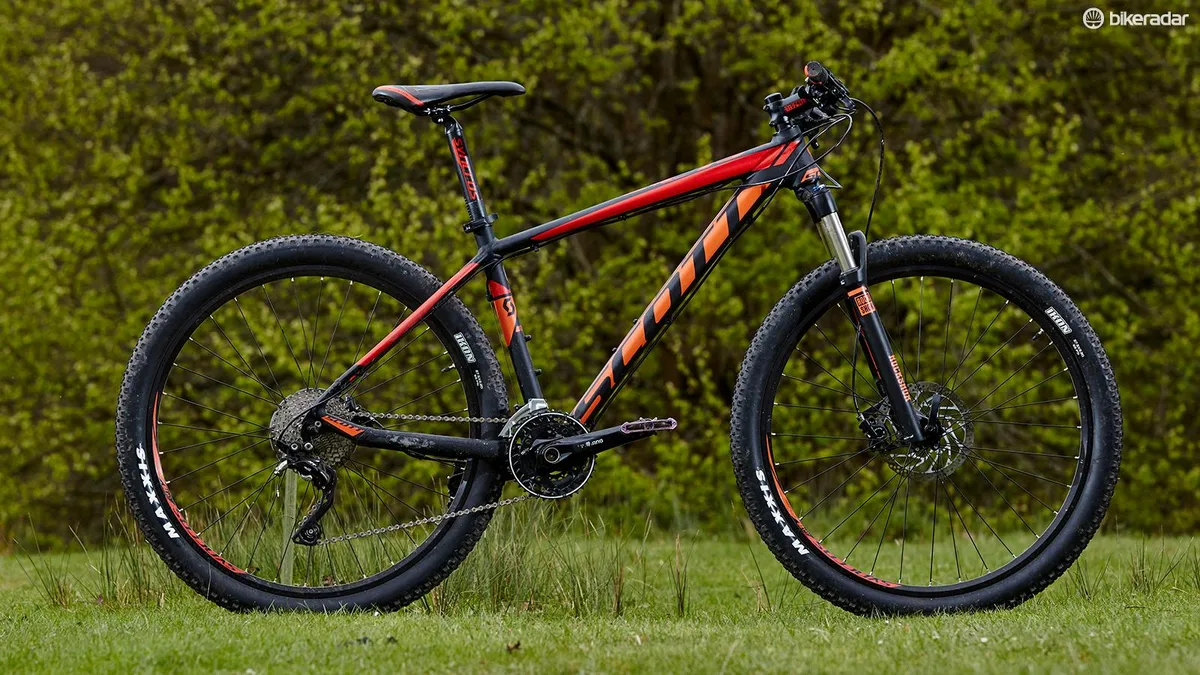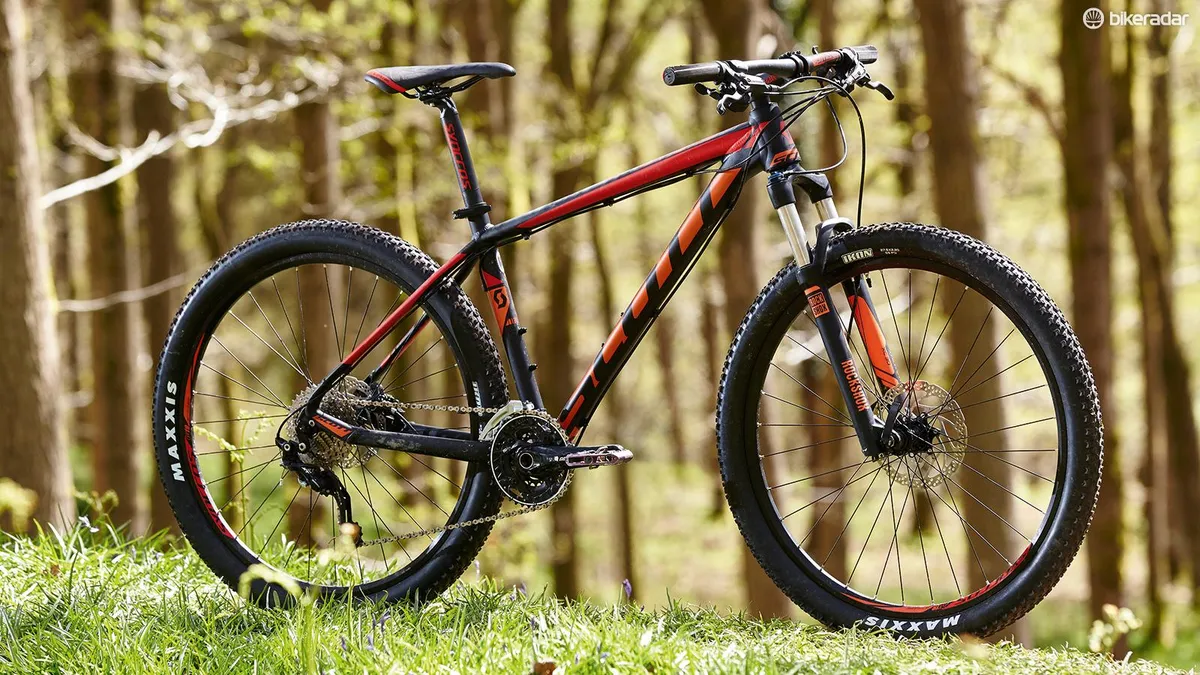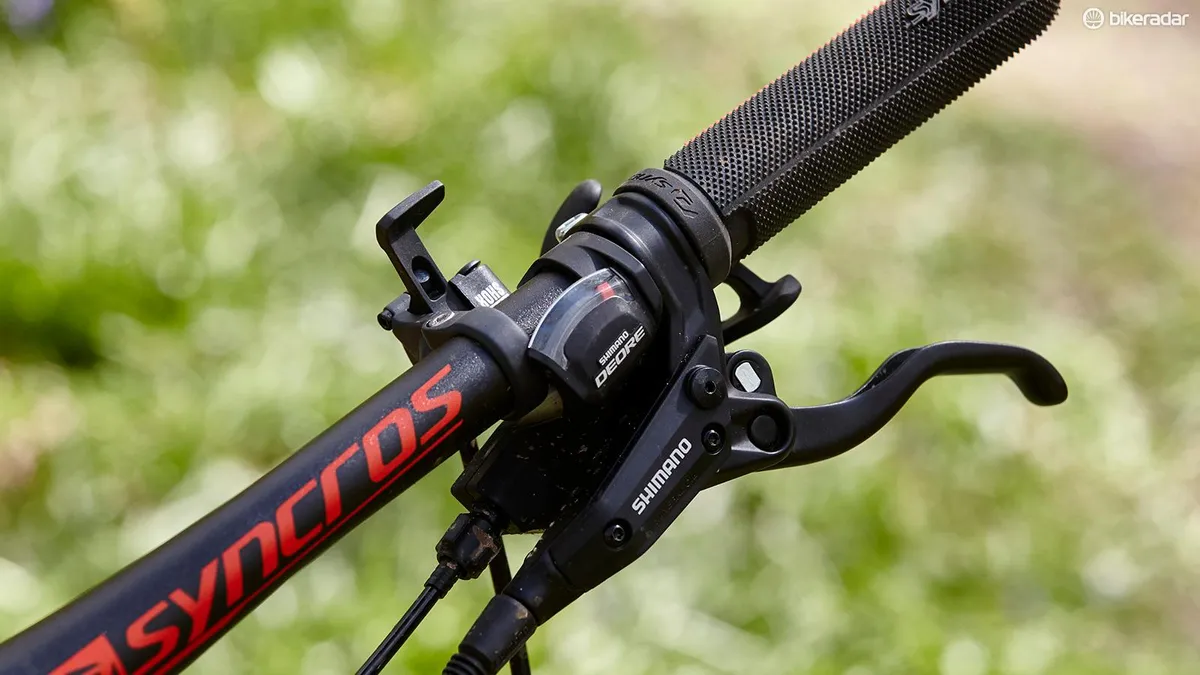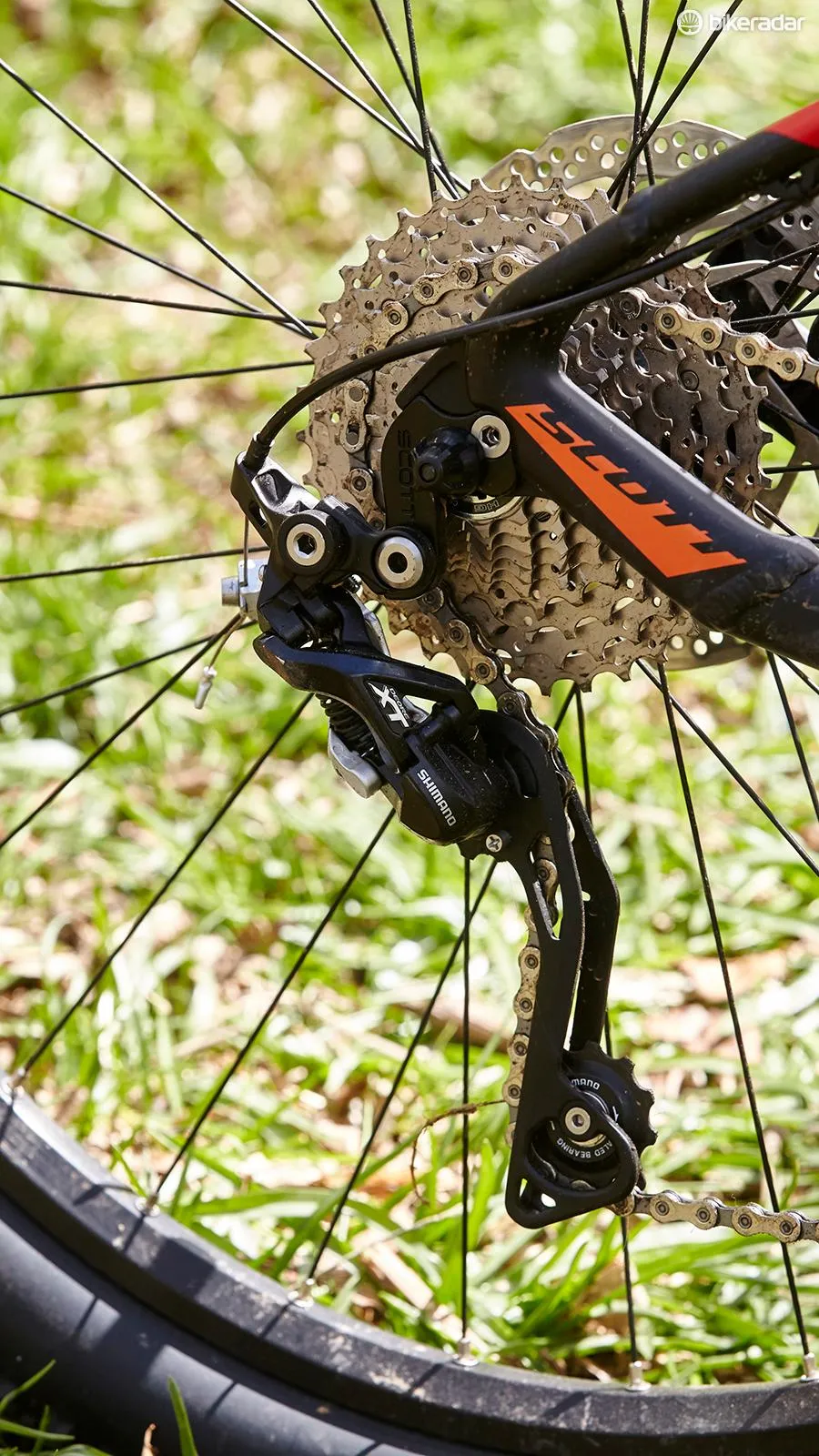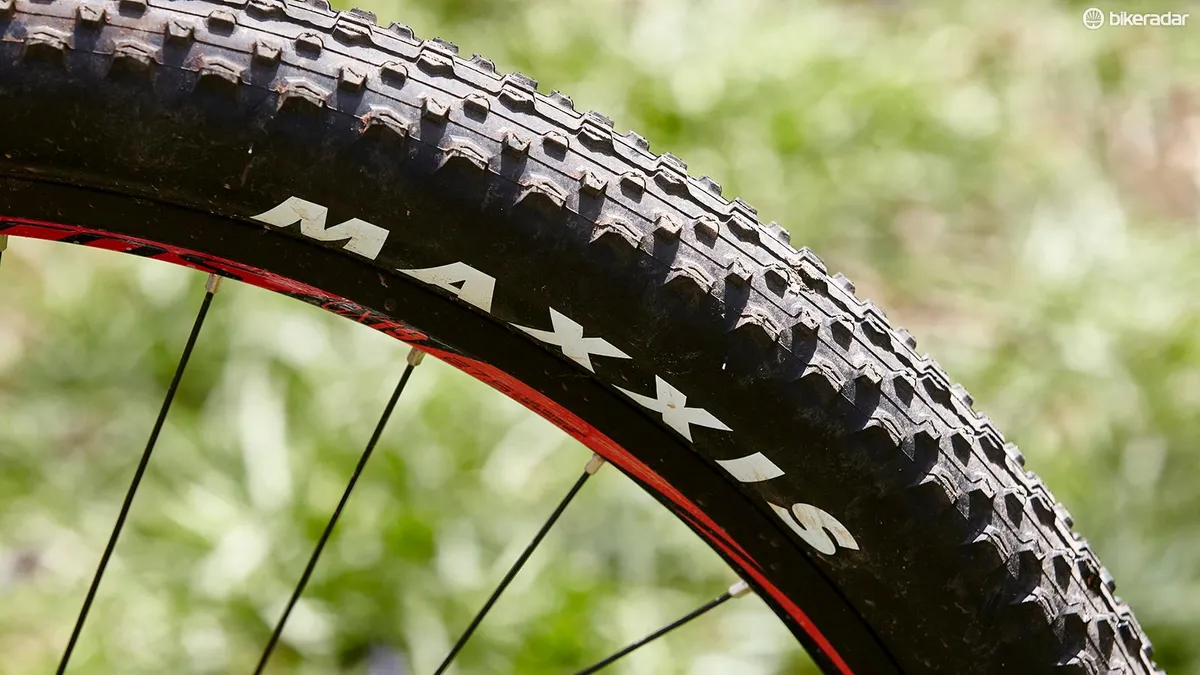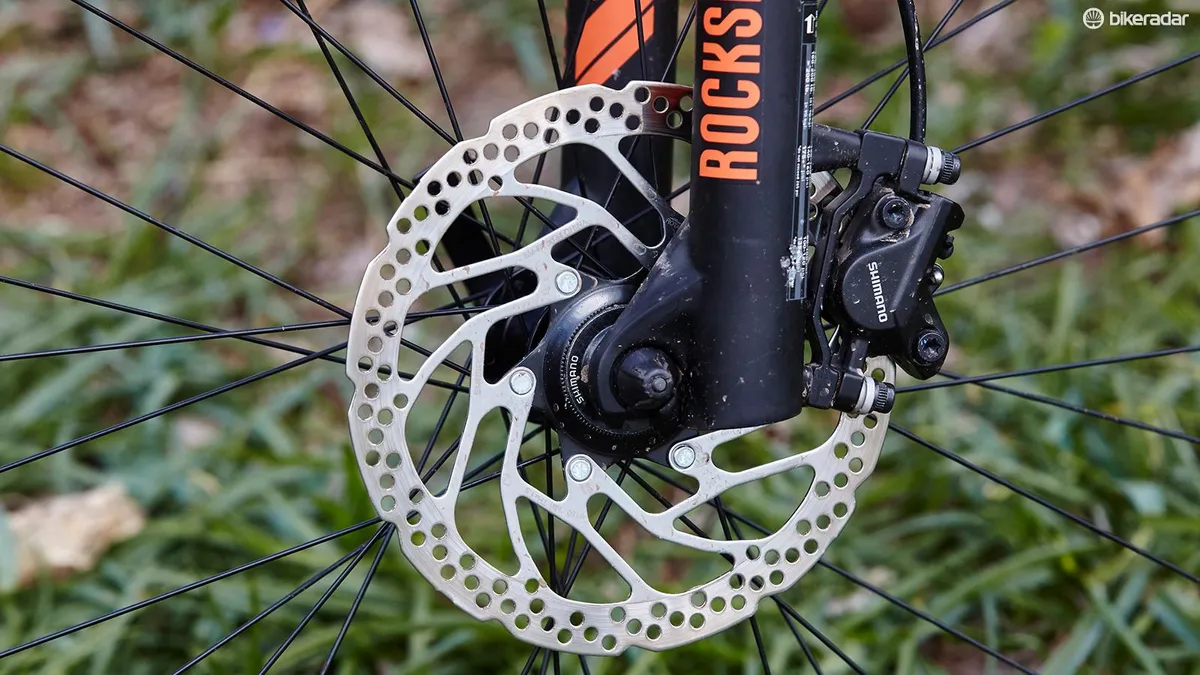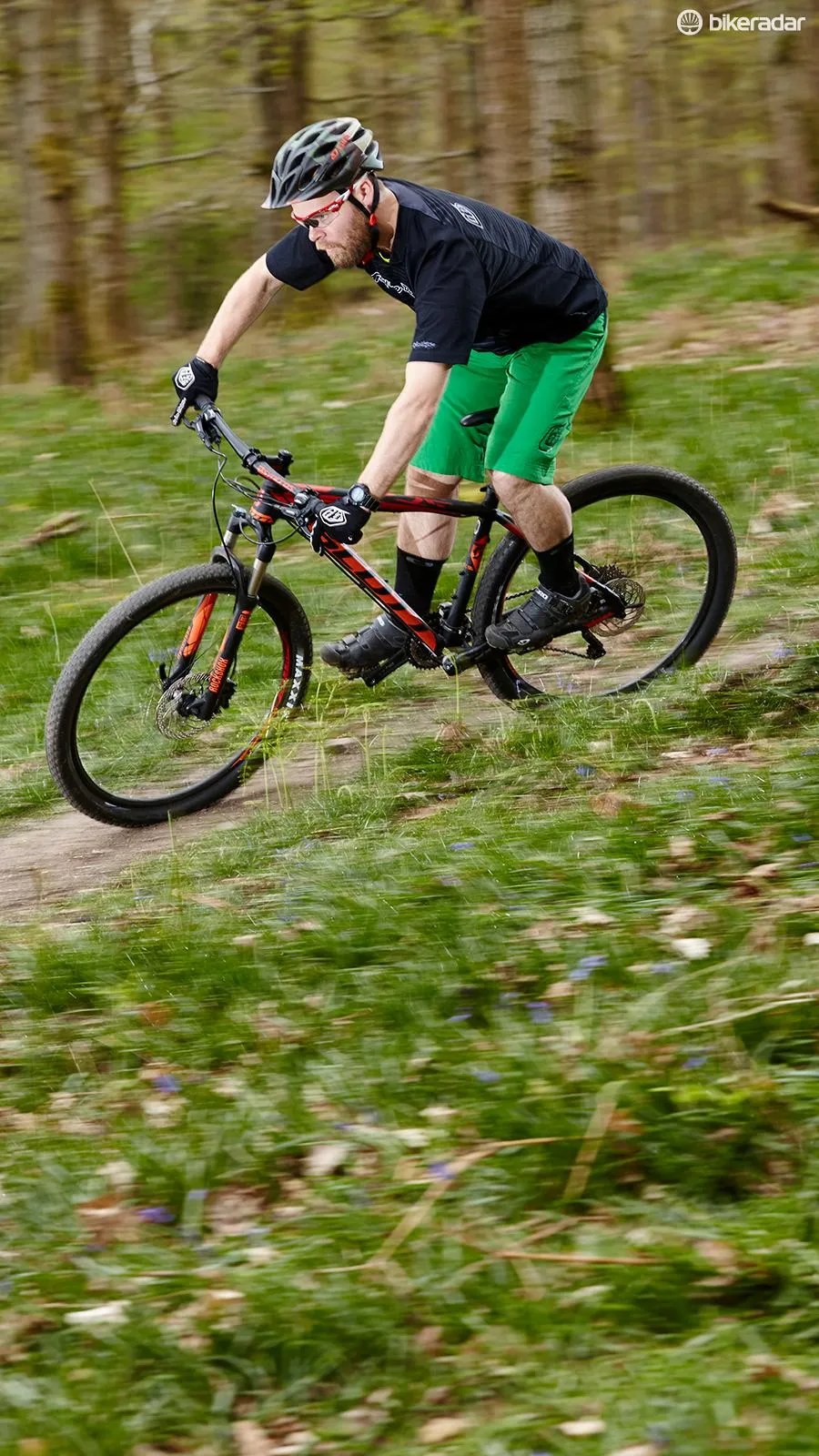Affordable hardtails typically sit in a sub-family of their own in a brand’s hierarchy, borrowing design features from higher up the range and cutting costs on kit.
Scott’s Scale range is a little different. The 760 sits one rung from the bottom of the Scale line-up but it shares its cross-country race-inspired geometry, in every detail, with the top-end Scale 700 SL. Whether that’s a good thing – and how much has been lost in translation – is what we’re here to find out.
- Highs: True thoroughbred geometry inherited from XC race proven designs, reliable component choices mean no nasty surprises
- Lows: Too heavy to make the best of that race-bred geometry, beginners may take time to adapt to the low front end
Frame and equipment: burly tubing, triple chainring and some thoughtful touches
Numbers on an engineering drawing aside, the Scale 760’s chassis is – as you’d expect – a world away from the super-light carbon concoction of the 700 SL. Good ol’ 6061 alloy is the frame material of choice here, served up with some neat design touches that help set it apart from the herd of ‘me too’ alu hardtails.
Taking its inspiration from the XC race-bred Scale range-toppers, stiffness – in terms of both pedal input and steering accuracy – is the 760’s key attribute. To that end, Scott’s designers have built the frame around a massive oval down tube, which is welded to a notably short, tapered head tube.
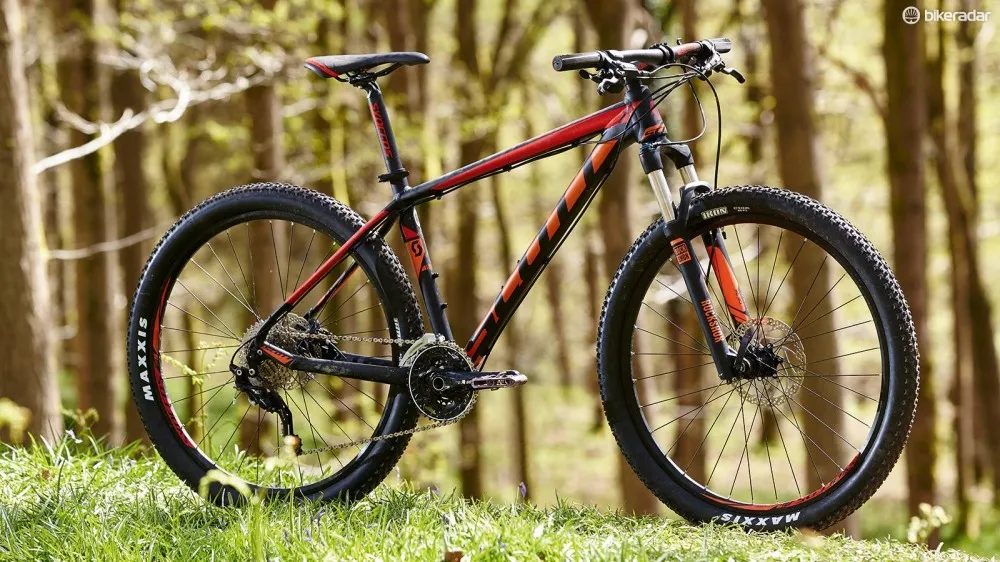
The Scale frame is designed for brutally efficient transfer of pedal power
Occupying the entire width of the bottom bracket shell at one end and wrapping almost halfway around the head tube at the other, this supersize down tube is a formidable piece of pipe that should ensure that every ounce of the rider’s effort is translated into forward progress.
Out back, some nifty dropout design tucks the rear brake caliper neatly inboard of both the chainstays and seatstays, while a minimalist seatstay bridge gives plenty of mud clearance up top (disappointingly, it isn’t matched at the bottom bracket). Two bottle cage mounts will keep wannabe racers well hydrated. But, as you’d expect on a bike with racing DNA, there are no rack mounts to help with the weekday commute.
Steering duties are handled by RockShox’ venerable XC 30 air fork, with 100mm (3.9in) of travel. The good news here is that Scott has even found room in the budget for a tidy handlebar-mounted remote lever, which transforms the lockout function from a tick-box gimmick into something that’s genuinely useful, whether racing or not, for those times when you forget to unlock before hitting a descent.
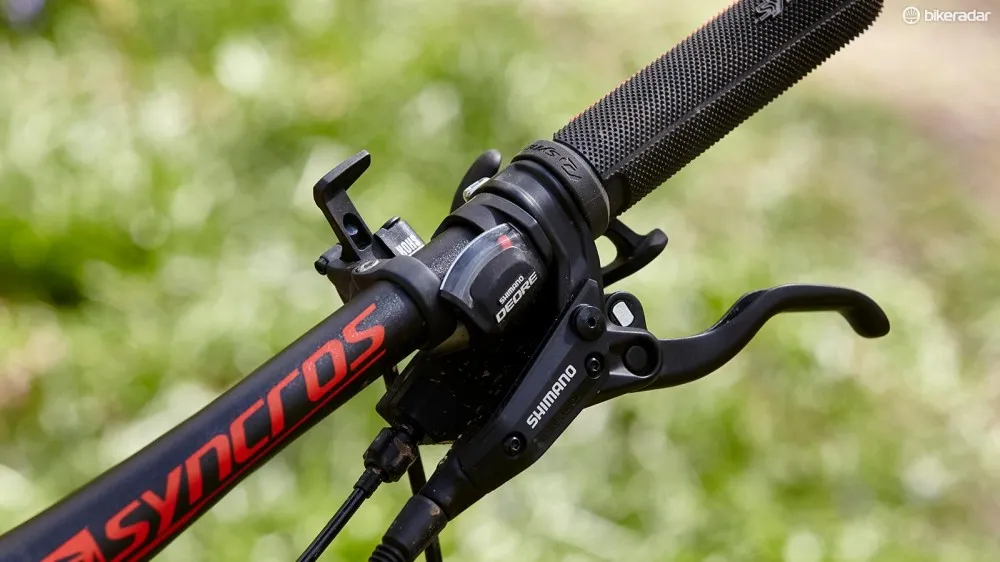
A bar-mounted lockout lever is a classy and practical touch
We wouldn’t have been surprised to see a 2x10 transmission here, but the Scale’s traditional triple-chainring setup has big-wheel (650b) friendly gearing that gains it a small advantage at the top end over the double-ring alternative.
Spec sheet watchers will love the Shimano XT rear derailleur upgrade, but in practical terms we’re more impressed with the large, descent-friendly 180mm brake rotor up front. A low stance and wide, flat bar complete the race-orientated rider setup, and Maxxis' Ikon treads offer a good blend of pace and float at the expense of grip in the mud.
Ride and handling: race geometry theory doesn't quite stack up on the trail
Budget hardtails don’t as a rule get to share their geometry with podium-topping carbon exotica. On that front alone therefore, the Scale 760 has top bragging rights at the trailhead. Its more expensive counterparts may trim 30 per cent or so off the 760’s all-up weight, but the dots joining all the components are in exactly the same place.
On the trail that translates into a low, stretched-out ride position that emphasises efficient power delivery to the rear wheel. Riders who’ve come over from road bikes are likely to feel at home – it’s a similar position to riding on the brake hoods. With a flat back and the arms bearing more upper body weight, it’s a tried-and-tested formula for squeezing the most out of a rider’s heart, lungs and legs.
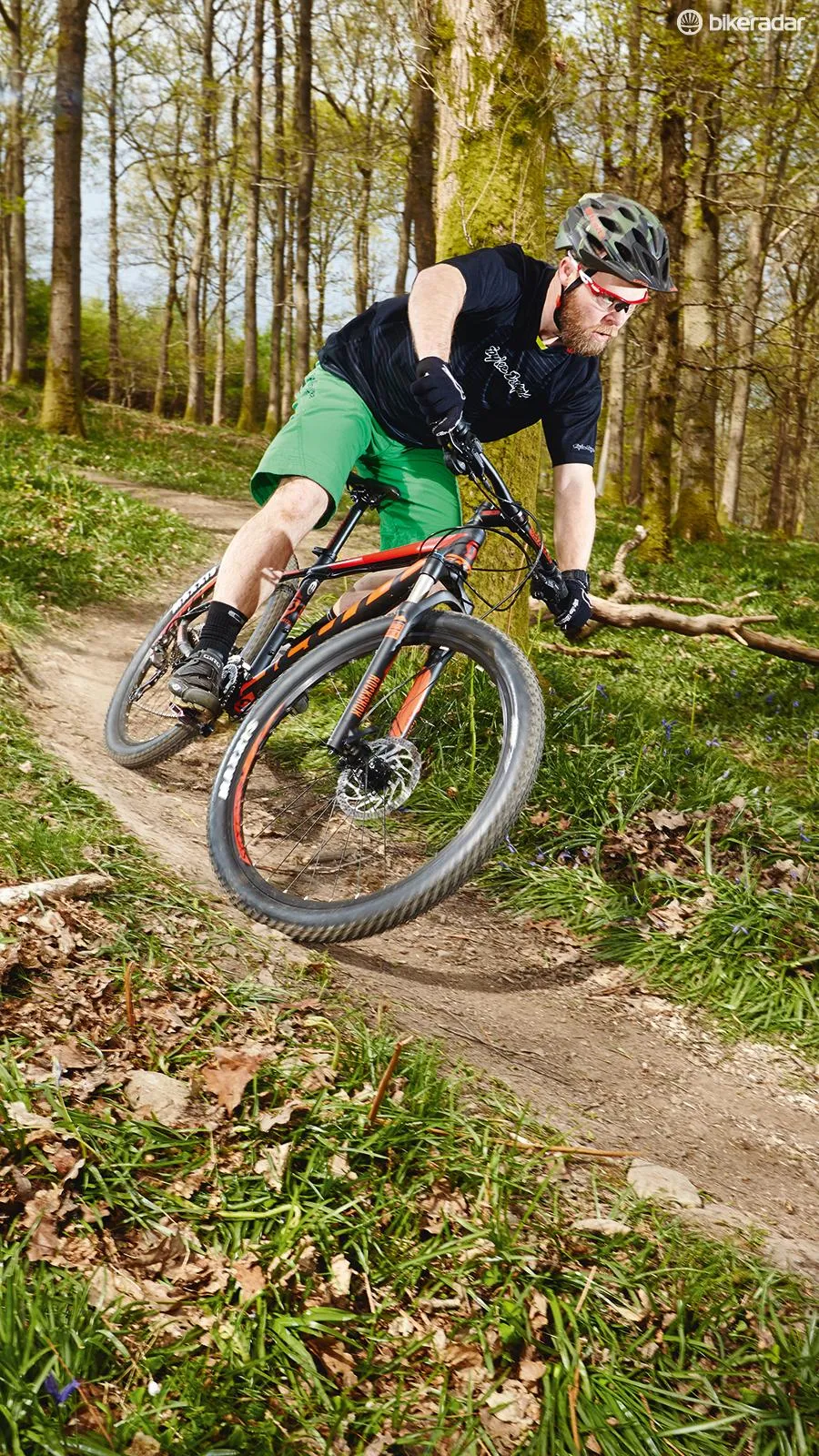
Novices may find the low front end takes some getting used to on descents
The trouble with this no-compromise approach is twofold on the 760. First, without the low weight – and particularly the fast-accelerating wheels – of the bikes that inspired its layout, the 760 comes across as more bark than bite.
It’s no surprise that it doesn’t surge forward in the way you’d expect a race bike to – after all, it is very reasonably priced. But still, in performance terms it bears about as much relation to the high-end Scales as an entry-level hatchback does to a Nürburgring-tuned race car.
Second, it’s just not as comfortable – or as fun – as a bike with slightly less steep geometry. The low front end makes it harder to pop over obstacles and, on steep descents, it’s that bit trickier to look far enough ahead to pick a line. We like the lighter Scales, so if you’re racing on a tight budget the 760 is worth a look, but for trail riding there are easier-handling options.
